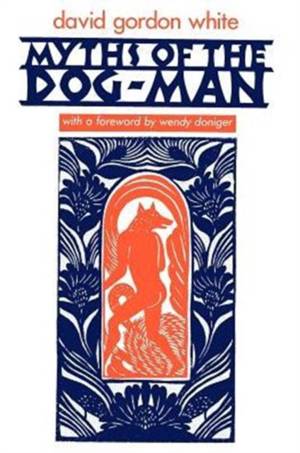
- Afhalen na 1 uur in een winkel met voorraad
- Gratis thuislevering in België vanaf € 30
- Ruim aanbod met 7 miljoen producten
- Afhalen na 1 uur in een winkel met voorraad
- Gratis thuislevering in België vanaf € 30
- Ruim aanbod met 7 miljoen producten
Zoeken
Omschrijving
"An impressive and important cross-cultural study that has vast implications for history, religion, anthropology, folklore, and other fields. . . . Remarkably wide-ranging and extremely well-documented, it covers (among much else) the following: medieval Christian legends such as the 14th-century Ethiopian Gadla Hawaryat (Contendings of the Apostles) that had their roots in Parthian Gnosticism and Manichaeism; dog-stars (especially Sirius), dog-days, and canine psychopomps in the ancient and Hellenistic world; the cynocephalic hordes of the ancient geographers; the legend of Prester John; Visvamitra and the Svapacas ("Dog-Cookers"); the Dog Rong ("warlike barbarians") during the Xia, Shang, and Zhou periods; the nochoy ghajar (Mongolian for "Dog Country") of the Khitans; the Panju myth of the Southern Man and Yao "barbarians" from chapter 116 of the History of the Latter Han and variants in a series of later texts; and the importance of dogs in ancient Chinese burial rites. . . . Extremely well-researched and highly significant."--Victor H. Mair, Asian Folklore Studies
Specificaties
Betrokkenen
- Auteur(s):
- Uitgeverij:
Inhoud
- Aantal bladzijden:
- 348
- Taal:
- Engels
Eigenschappen
- Productcode (EAN):
- 9780226895093
- Verschijningsdatum:
- 7/05/1991
- Uitvoering:
- Paperback
- Formaat:
- Trade paperback (VS)
- Afmetingen:
- 154 mm x 229 mm
- Gewicht:
- 453 g

Alleen bij Standaard Boekhandel
+ 125 punten op je klantenkaart van Standaard Boekhandel
Beoordelingen
We publiceren alleen reviews die voldoen aan de voorwaarden voor reviews. Bekijk onze voorwaarden voor reviews.











